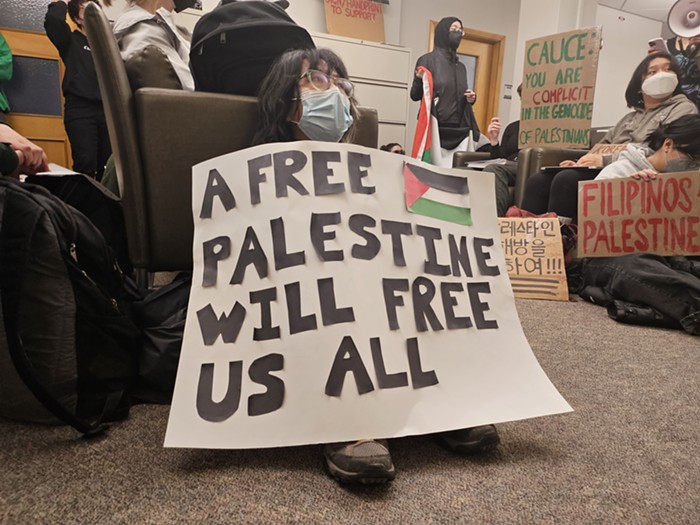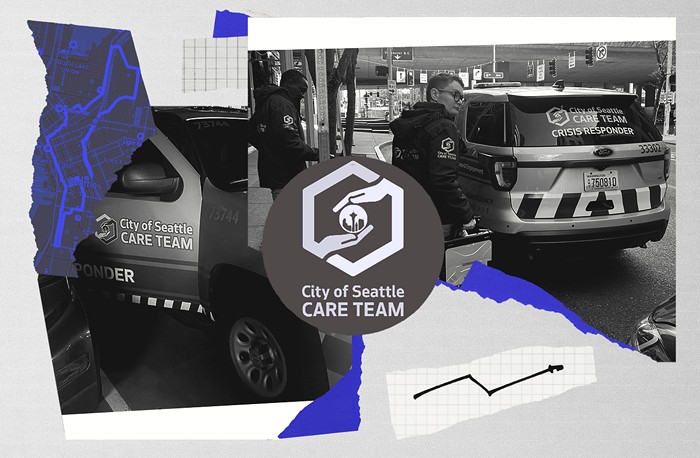On December 18, the city council approved legislation protecting industrial lands from encroaching commercial development in South Seattle's manufacturing corridor. It was a controversial decision, but given the facts on the ground it seemed to make sense.
The legislation blocks commercial developers, motivated by the cheap land prices, from snatching up industrial lands that are in high demand; industrial land vacancy is a tight 2.5 percent, while the commercial vacancy rate hovers at 9 to 10 percent. Furthermore, Seattle's collective industrial sector is the city's largest employer, providing predominantly blue-collar jobs.
But while the city seems intent on protecting the health of the industrial sector, it's not clear the feeling is reciprocal.
The council's decision came as Lafarge North America, a $2.1 billion Virginia-based manufacturing giant with a plant on West Marginal Way Southwest, is pushing to change its cement manufacturing process in ways that could pose health risks to nearby South Park and Georgetown residents. The company is aiming for EPA approval to power its cement-making kiln by burning scrap tires. Tire burning, which produces dioxin—a carcinogen—raises red flags for surrounding communities. The company tried to make the switch last June (currently it powers its kiln with a mix of coal and rubber tires), but fell short of EPA emission standards during a trial run. The company is awaiting results of tests conducted in November.
"The city is creating a ghetto," says South Park community activist Nigel Day. "They say it's not a class issue, but we're sitting here in a squalor of industrial pollution and they just ignore it."
The combined environmental footprint of Lafarge and other industrial plants in the Duwamish Valley has had a profound effect on residents' health, says Heather Trim of People for Puget Sound, a local environmental advocacy group. A survey conducted by King County in 2005 found that the Georgetown and South Park neighborhoods had the highest asthma hospitalization rates in the county. Trim, along with the state-chartered Puget Sound Clean Air Agency and neighbors say Lafarge is responsible for a noxious odor that has been the subject of residents' complaints for years.
South Seattle residents say the odor causes respiratory problems, nausea, and headaches. There are instances where children and staff at nearby Concord Elementary School have been sent home from school after becoming sick during recess or prolonged periods spent outdoors, says David Tucker, a spokesperson for Seattle Public Schools. Similar instances were reported at Highland Park Elementary, also in the plant's vicinity, by the Seattle Post-Intelligencer in 2002.
However, in 2003 the company tested for hazardous chemicals in their plant's emissions—tests they say absolve them of responsibility. They also say switching to tire burning will benefit both their business and the neighbors. Burning whole tires is more affordable than their current process. And while phone calls to the plant were not returned, according to Puget Sound Clean Air Agency, the company also says tire incineration will lead to a drop in some emissions from the plant.
While tire incineration can lead to a drop in formaldehyde and mercury levels in emissions, levels of carbon monoxide and dioxin—a highly toxic carcinogen that is in Agent Orange and was found at Love Canal, the poster child of industrial environmental fiascos—increased in the test run.
While there are a number of cement plants that operate incinerators in the area, and all of them contribute to air-quality concerns—890 complaints have been filed with the Puget Sound Clean Air Agency since 2000—the agency's compliance director Jim Nolan says the inefficient Lafarge plant produces more pollution. Even if the tests find a drop in toxic emission levels, Nolan says the switch is still a Band-Aid for the outdated technology of the plant.
"You could look at their smokestacks and you would see yellow smoke come out and then the odor would come around— when the smoke stacks weren't putting out yellow smoke, it didn't smell," local activist Day says. ![]()


















